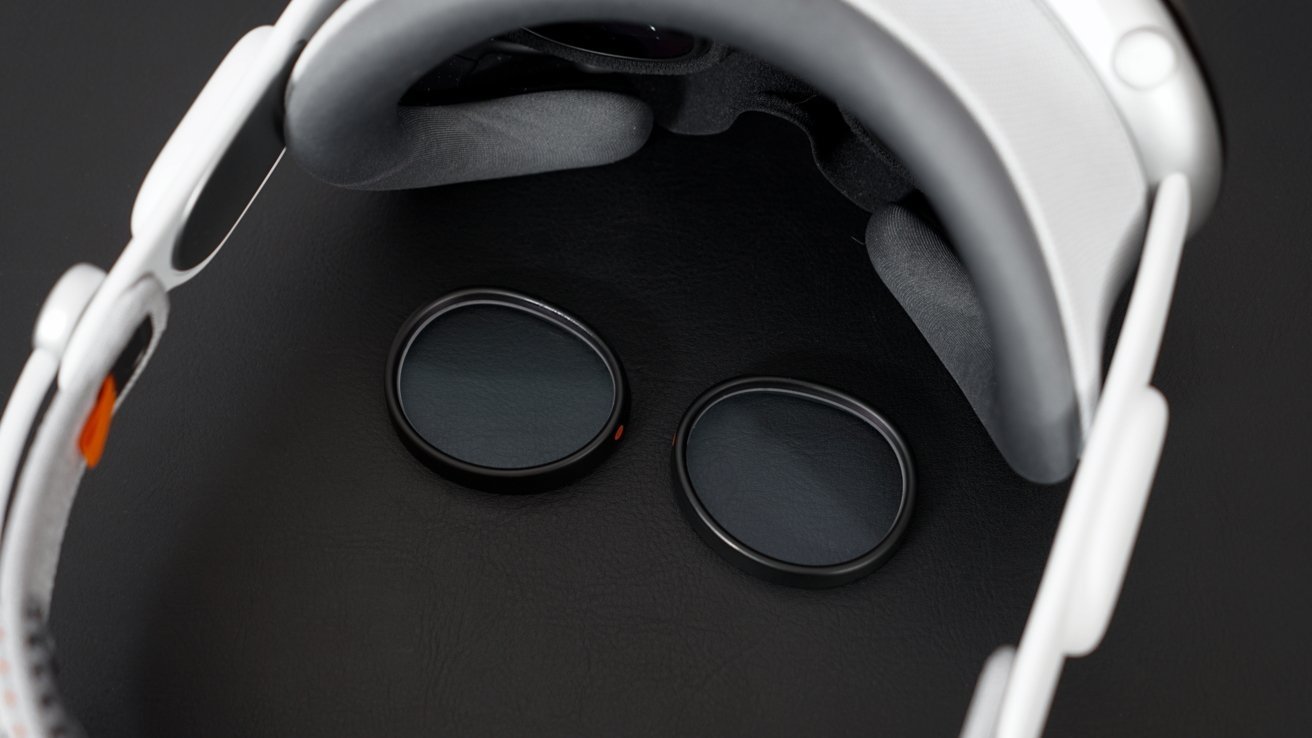Apple is working on technology that could allow you to ditch the expensive Zeiss inserts needed to correct vision issues on the Apple Vision Pro. Future headsets could dynamically change focus based on what you’re looking at.
Dynamically focusing systems use liquid-filled lenses and electrical current to adjust focus to match a prescription. When a current is applied to the lenses, the liquid changes how light passes through them to the eye.
Traditional lenses and inserts also change how light hits the eye, but glass lenses can’t be adjusted once made. Liquid lenses could change as a user’s vision changes, eliminating the need to buy new inserts.
This dynamic focusing system also solves another problem with insertable corrective lenses. Inserts are not as helpful in an AR environment for users with different prescriptions for distance and reading.
Traditional progressive glasses have the distance prescription at the top of a lens and the close focus prescription at the bottom. However, an AR system is based on a display that’s always at the same distance from your face.
The screen’s distance does not change whether you look across a room to watch TV or down at your keyboard, as the headset’s distance from your face does not change. The result can be blurry areas on a user’s gaze.
With this patent, future models of the Apple Vision Pro could have lenses that focus on the fly to adjust for various vision issues. For example, changing attention from a TV to a keyboard would trigger an adjustment to the focus based on what the user is looking at and the different prescription needs for that distance.
Apple describes using liquid-filled lenses to achieve these changes in focus. A liquid-filled lens changes prescription when an electrical current is applied, so matching different prescriptions is just a matter of varying the power sent to the lenses.
Practical problems to solve
The patent also explains adjusting focus without draining a battery since electricity changes the prescription. This is an important practical problem to be overcome for liquid lenses to work. After all, an adjustable lens doesn’t help if the battery dies because of its use.
This technology would be critical for something like the much-rumored Apple Glasses, as the lenses in that device would likely be an integral part of the frames, and prescription adjustment would be more difficult than popping in inserts.
It’s also unlikely that Apple would want to make prescription glasses to accommodate the many vision problems typical of users. With this technology, Apple could make a prescription-free set of glasses that can adjust to any user’s vision needs.
Apply applies for patents in a wide array of fields. Still, the number of recent patent applications and updates to previous patents could indicate that auto-correcting vision technology could soon be available in a new headset.
This patent is attributed to James E. Pedder and several colleagues, who hold multiple patents for liquid lenses, tunable lenses, and technologies.

